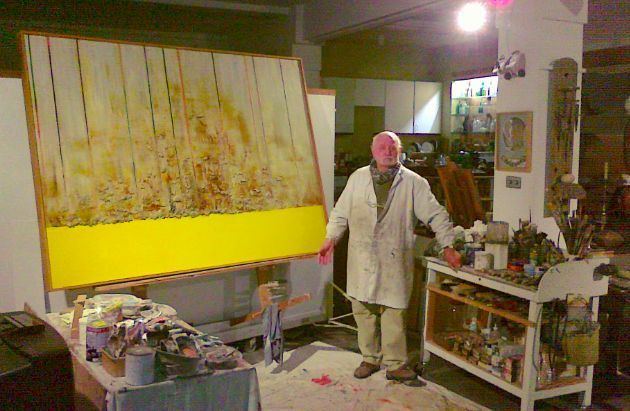Name Michael Green | ||
 | ||
Michael green sustainable artist
Michael John William Green (born 7 August 1929) is a British painter and sculptor. He moved from an initial career in theatre to art in his mid-thirties, was an autodidactic as a painter but had from his very early years a natural talent in painting and drawing.
Contents
- Michael green sustainable artist
- Early life
- Career
- Style
- Influences
- Public Collections
- Solo exhibitions
- Group exhibitions
- References
He lives in London and in Molini di Triora.
Early life
Green was born in Nyasaland, East Africa (now Malawi) where he spent his first seven and a half years before coming to England for his Public School education. At the age of 15 he was awarded the Vicountess Northcliffe Scholarship at RADA (London) and initially worked in the theatre and moved to New York City when he was 23.
Career
After theatre work in Manhattan, he moved into product and decorative design work. Only at the age of 36 did he realise that he had made the wrong career choice at the age of 15. He then decided that he had to be a professional painter and quickly moved from representative painting to abstraction. He was Artist in Residence at the Indiana State University (1978), giving master classes on advanced painting and lectures on colour theory. In 1986, he gave up his New York studio and moved back to London. He set up a studio in the old Spratt's Dog Biscuit factory, where he began his first sculptures.
Style
He moved into abstraction soon after working figuratively, searching for a personal visual language and set up his first studio in SoHo while still only an avant-garde artist area. Established second studio in Northern Italy, thus preserving a 'European' ethos. His pre-occupation as an abstract painter for four decades has been with space. Not the astronaut's space but the space of the mind, an intellectual infinity. Lacking nature's spatial indicators (sky, perspective, horizon) idiomatic alternatives were needed. Thus his extensive earlier 'Bridge Series', oils and drawings - the metaphorical 'bridge' was his spatial ploy, creating the spatial tension that in reality is elemental to any actual bridge: space, structure and tension.
He took up sculpture, concurrently with painting, on moving back to London in 1986, after a quarter century as a 'New York painter'. For him, space automatically is intrinsic to sculpture's dimensionality, so the ingredient of tension became prime: tensile linear balancing, contrasting textural disparities (shiny new, time-worn old), stressing the emotional stretch of a work.
The current long on-going 'Painted Drawing Series' (works large and small, canvas oils, works on paper) hopefully engages the viewer more directly with the creative self via emotional painted gestures, the 'drawing' of the brush.
Influences
His peers of influence range from John Sell Cotman to Richard Diebenkorn.
